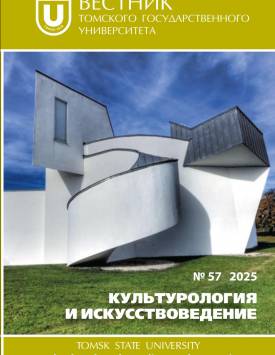“Pony” phenomenon in the children’s mass culture
The article deals with the analysis of the “Pony” phenomenon in the children’s mass culture. The notions “pony” and “horse are compared in different languages and cultures. The author singles out the differences of the symbolic meaning of a horse/pony and a unicorn. The evolution of ponies and unicorns in the children’s mass culture is described. On the one hand, the article shows a traditional view on the image of a horse in the children’s mass culture in Pony Books. A typical plot of this type of fiction contains a girl from quite a poor family and a pony. First, the girl doesn’t have a horse but her main dream is to become a perfect rider. Then she finds a pony suffering from its previous masters. She saves it and they become friends. An adult, who was a good rider in the past, trains her and soon she becomes the winner in horse-riding competitions. The girl is always wise, broadminded, has got a lot of hobbies (for example, poetry), and loves all animals. The main idea of all Pony Books is to prove that friendship with a pony can change someone or something for the better. The author highlights that in British Pony Books the image of a pony is traditional, meaning its appearance, character, relationships with a mistress, this is a friend. On the other hand, the article analyses modern understanding of the image of a pony depicted in American filmmaking, which differs a lot from the British one. In contrast, in the series My Little Pony, which seem to be aimed at children, there is quite an unchildish plot with adult problems. The target audience is not only girls, but teenagers and adults and not only female. The series are based on mythology, traditions from different cultures, they reflect social structure and models of behavior. They attract many male fans called Bronies (from the words “brother” and “pony”). The article investigates the reasons of this interest and compares the arguments of modern scholars. The author concludes that the “pony” phenomenon is changeable in time and ambiguous in the world culture. The author declares no conflicts of interests.
Keywords
children’s mass culture,
American culture,
British culture,
children’s literature,
image,
pony,
horse,
unicornAuthors
| Gradaleva Ekaterina A. | Samara State Technical University | katerina-888@bk.ru |
Всего: 1
References
Храмова М.Н. Метаморфозы зооморфных образов в массовой культуре: образ животного и проблема идентификации в возрастных субкультурах // Труды Санкт-Петербургского государственного института культуры. 2015. № 210. С. 177-190.
Шапинская Е.Н. Массовая культура. 2-е изд., испр. и доп. М.: Юрайт, 2020. 249 с.
Дианова Н. Ф. Проблемы преемственности традиционной детской субкультуры // Аналитика культурологии. 2011. №" 19. С. 7-11.
Иванова Е.А. Механизмы актуализации концепта horse в британской лингвокультуре: дис.. канд. филол. наук. Самара, 2010. 242 с.
Dorre Gina M. Victorian Fiction and the Cult of the Horse. Aldershot: Ashgate Publishing Ltd., 2006. 187 p.
Weida C.L., Bradbury C. Magical aesthetics of unicorns in girlhood visual culture // Visual Culture & Gender. 2020. Vol. 15. P. 44-55.
Тресиддер Дж. Словарь символов. М.: Гранд: Фаир-Пресс, 1999. 444 с.
Илюхина Н.А. Образ как объект и модель семасиологического анализа: дис.. д-ра филол. наук: 10.02.01. Уфа, 1999. 417 с.
Smith H.The unicorn myth // World History Encyclopedia. URL: https://www.worldhistory.org/article/1629/the-unicom-myth/(дата обращения: 14.06.2023).
Градалева Е.А. Актуализация национальной концептосферы в геральдике // Перспективы развития науки и образования: сб. науч. тр. по материалам междунар. науч.-практ. конф. 1 июля 2014 г.: в 5 ч. 2014. Ч. 1. С. 81-83.
The mystical unicorn of Scotland // Scottish at Heart. URL: https://www.scottish-at-heart.com/unicom-of-scotland.html (дата обращения: 14.06.2023).
Carroll L. Through the looking glass and what Alice found there // Literature. URL: https://www.literature.org/authors/carroll-lewis/through-the-looking-glass/chapter-07.html (accessed: 15.06.2023).
Babic V., Vekic D. The Unicorn in the symbolic and semantic expression of the film director Ridley Scott in the context of medieval bestiaries // Open Journal of Social Sciences. 2018. № 6. P. 158-175.
Denby D. Generating possibilities. Philosophical studies // An International Journal for Philosophy in the Analytic Tradition. 2008. Vol. 141, № 2. P. 191-207.
Phipps S.E. The Magical Unicorn Society. Official Handbook. UK: Michael O'Mara, 2018. 120 p.
Beagle P.S. The Last Unicorn. US: Viking Press, 1968. 218 p.
Begin M.J. My Little Pony: The Art of Equestria. US: Abrams, 2015. 216 p.
Cridland C. Pony Books.Introduction // Jane Badger Books. URL: https://janebadger-books.co.uk/pony-books-an-introduction-by-clarissa-cridland/(accessed: 18.05.2023).
Russell-Williams I. The Timeless Appeal of the Pony Book // The Guardian. URL: http://www.guardian.co.uk/books/booksblog/2009/apr/09/girls-pony-books (accessed: 28.05.2023).
Badger J. Pony Books - the Rules // Jane Badger Books. URL: https://janebadger-books.co.uk/pony-books-the-rules/(accessed: 18.05.2023).
Australian and NZ Pony Books // Pony Mad Booklovers: the website for all readers and collectors of pony fictions. URL: http://ponymadbooklovers.co.uk (accessed: 28.05.2023).
My Little Pony Friendship is Magic Wiki // Fandom. URL: https://mlp.fandom.com/wiki/Characters (accessed: 16.06.2023).
Generation 5 My Little Pony // Fandom. URL: https://g5mlp.fandom.com/wiki/Category:Characters (accessed: 16.06.2023).
Connelly Sh. Ponyville Confidential: The History and Culture of My Little Pony, 1981-2016. US: McFarland & Company, 2017. 264 p.
Kirkland E. "Little girls and the things that they love": My Little Pony: Friendship Is Magic, audience, identity, and the privilege of contemporary fan culture // Camera Obscura. 2017. Vol. 32, № 2 (95). P. 89-115.
Truitt B. 'My Little Pony' plants a hoof in pop culture // USA Today. URL: https://www.usatoday.com/story/life/2012/11/26/my-little-pony/1725375/(дата обращения: 16.06.2023).
Kerr K.R., Vasudevan L. The power of a pony: youth literacies, participatory culture, and active meaning making // Journal of Adolescent and Adult Literacy. 2017. Vol. 61, issue 1. P. 113-116.
Heljakka K. From toys to television and back: My Little Pony appropriated in adult toy play // The Journal of Popular Television. 2015. Vol. 3, № 1. P. 99-109.
Alvermann D.E., Hagood M.C. Fandom and critical media literacy // Journal of Adolescent & Adult Literacy. 2000. Vol. 43, № 5. P. 436-446.
Davis K. What My Little Pony can teach us about interest-driven learning // Proceedings of the Seventh ACM Conference on Learning @ Scale. URL: https://dl.acm.org/doi/abs/ (дата обращения: 20.06.2023). 10.1145/3386527. 3406207.

